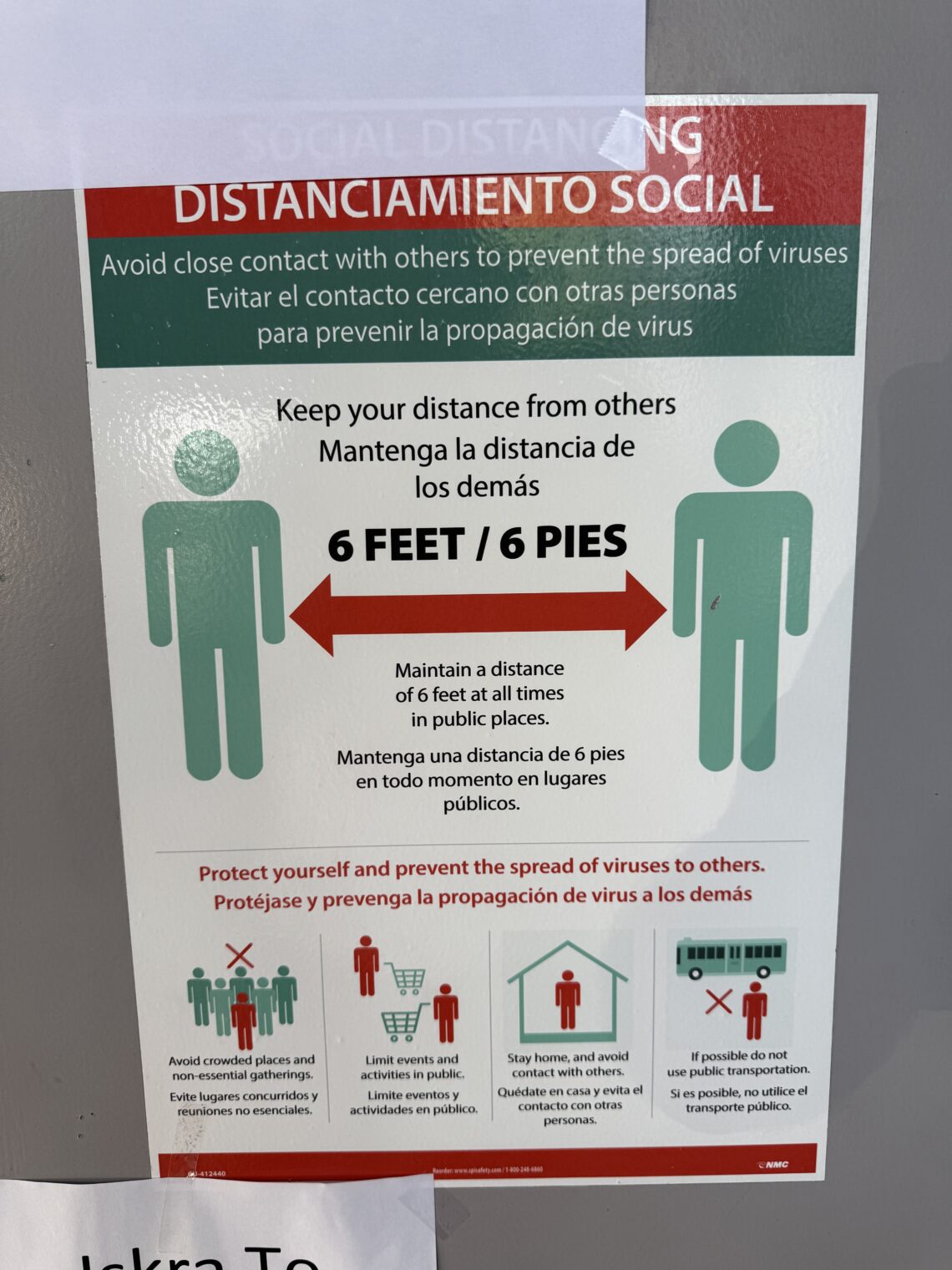Most of the lectures at Sun ‘n Fun happen in a modern air-conditioned building that belongs to Central Florida Aerospace Academy, a public high school. Fittingly for today’s topic, one enters the building via a door that features a coronapanic sign:
(See When will we feel safe enough to remove our coronapanic signs? (2024))
The presenter was Dr. Daniel Monlux, the kind of physician that noble aid recipients in the Middle East, accustomed to free food, education, health care, etc., probably wouldn’t ask to see twice (he was in the F/A-18 in the U.S. Navy). Dr. Monlux is a founder of Wingman Med, a consulting firm that helps pilots maintain their medicals.
The most important take-away from the talk is that every pilot should get certified under BasicMed even if he/she/ze/they also holds a conventional medical certificate. That way, if there is a hiccup in the medical renewal process, the pilot can still fly his/her/zir/their family around in a Cessna or Cirrus. There is no obstacle to dual medical certification.
What can go wrong in the medical renewal process? If the pilot discloses a new condition of some sort (the FAA doesn’t normally have access to a pilot’s medical records other than self-disclosure, according to Dr. Monlux) and that new condition isn’t on the “CACI list” or the pilot doesn’t have the right documentation for the AME (Aviation Medical Examiner) to issue a medical under CACI then there will be a deferral.
First, how can the pilot avoid a deferral? One way is to look at the CACI list web pages and figure out what the AME will need to see. Typically it is a report from a physician (not a nurse-practitioner or PA) within 90 days of the aviation medical exam.
Suppose that there is a deferral? Then the pilot is plunged into a hellish holding pattern. Mostly this is not due to the low-paid doctors employed by the FAA in Oklahoma City wanting to torture pilots, but rather because the FAA is required by regulation to use only USPS and hardcopy letters for communicating with pilots. It takes 2-3 months for a hardcopy mail exchange to occur. If the pilot hasn’t given the FAA exactly the information requested in the format that is requested, there will be at least another 2-3 months of delay. (no need for a DOGE reengineering here!)
Pilots often make things worse during this process. They will submit more information that the FAA requests, e.g., a full medical record from a provider that happens to have a medication list and a condition list. Invariably, these lists at medical institutions are out of date and contain conditions and medications that are no longer relevant, but once the FAA sees any of them they will need an explanation (from a physician within the past 90 days) about why the condition no longer exists and the medication is no longer being taken.
These processes can drag on for years and there is a plan for the FAA to start denying medical applications, rather than simply continuing the deferral farce, if the pilot can’t get organized to supply everything that the FAA needs (could be challenging in a country where it can take 3-4 months to get an appointment with a specialist). If the FAA actually denies a medical certificate then the pilot can’t continue to fly under BasicMed.
As noted above, most problems in this domain are self-inflicted. However, in the event of a complaint by a copilot, for example, the FAA does have access to prescription drug databases and might be able to see, for example, that a pilot was prescribed opioids (America’s favorite pastime) or anti-psychotic drugs.
Let me close with a trendy new topic: What if you’re a massive beefcake and decide to slim down via Ozempic or similar? Make sure that it is prescribed for weight loss, not diabetes! Diabetes is a matter of serious concern to the FAA because, among other things, it can affect vision.
Readers: Who has been on Ozempic or a competitive GLP-1 inhibitor? I have a few friends on them and everyone seems happy in their new thin guise. Is Elon Musk right that everyone should be on them? I would have to lose 20 lbs. to get into what the government says is an ideal weight range. As long as our house is within 15 minutes of Costco, I don’t see that happening absent Ozempic and, at the same time, I hate the idea of giving myself injections almost as much as I hate the idea of grueling exercise.
Speaking of Ozempic, here’s where I got lunch:
Full post, including comments 












